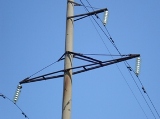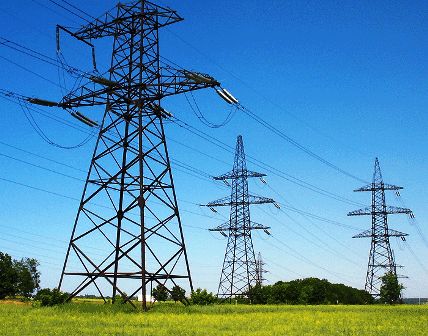The principle of operation of zero-sequence current directional protection in 110 kV electrical networks
 Current directional zero-sequence protection (TNZNP) is used when it is necessary to protect high-voltage power lines from single-phase short circuits-earth faults on one of the phase conductors in the power network. This protection is used as backup protection for power lines of voltage class 110 kV. Below we give the principle of operation of this protection, consider how and with the help of what devices TNZNP is applied in 110 kV electrical networks.
Current directional zero-sequence protection (TNZNP) is used when it is necessary to protect high-voltage power lines from single-phase short circuits-earth faults on one of the phase conductors in the power network. This protection is used as backup protection for power lines of voltage class 110 kV. Below we give the principle of operation of this protection, consider how and with the help of what devices TNZNP is applied in 110 kV electrical networks.
In electrical engineering, there is a concept of symmetrical and unbalanced systems of phase currents or voltages. The symmetrical system ensures equality of phase currents (voltages) three-phase network… In this case, the vectors of the phase currents can stand relative to each other in direct, reverse and also zero sequence (NP).
In positive sequence, the phase current vectors go in the sequence A, B, C, each phase lagging the other by 120 g.The reverse sequence is the alternation of phases A, C, B, the phase shift angle is the same — 120 degrees. In the case of zero sequence, the vectors of the three phases coincide in direction. An asymmetric system is represented as a current value — the geometric sum of the vectors of all components of the direct, negative and zero sequence.
During normal operation of a part of the electrical network, the system of currents and voltages is symmetrical, the same applies to phase-phase short circuits. In this case, both the voltage and current of the NP are equal to zero. In the event of a single-phase ground fault, the system becomes asymmetric — NP current and voltage occur.
In this case, the current (voltage) of one of the zero-sequence phases is equal to one third of the sum of the vectors of the asymmetric system, respectively, the sum of the vectors of the asymmetric system is three times the current (voltage) of the LV.
The results of short-circuit calculations in electrical networks also show that the current of a single-phase earth fault in electrical networks is equal to the triple value of the current NP — 3I0 and the voltage arising between the neutral of the transformer and the short-circuit point — to the triple value of the voltage NP — 3U0.
The working principle of the zero-sequence overcurrent protection is to control the value of 3I0 of the power line, and if it reaches a certain value, automatically turn off the power line breaker with a certain time delay.
In practice, the unbalance currents 3I0 are obtained at the output of the so-called zero-sequence current filter.This filter is obtained by electrically connecting the beginning and end of the windings of the current transformers of each phase of the line.
In normal operation of a section of the electrical network, there is no current at the output of the NP current filter. In case of failure — the fall of one of the phase conductors of the power line to the ground, an imbalance occurs — a certain value of the current 3I0 appears, the value of which is fixed at the output of the filter of NP currents.

TNZNP, as a rule, multi-level protection. Each of the stages of protection has its own reaction time. To ensure selectivity of protection operations in neighboring substations, sections of the electrical network are divided into sections (areas of coverage). Thus, the protection provides protection to the power line fed by the substation where the given set of protections is installed and acts as backup protection for neighboring substations.
There is such a phenomenon as oscillation in the system. If short-circuit protection between lines, for example, distance protection, can be falsely triggered when this phenomenon occurs, then the false triggering of the TNZNP is excluded, since this protection reacts exclusively to the occurrence of zero-sequence currents, the occurrence of which is not characteristic of the phenomenon of swing in the power system.
The protection discussed in the article is actually protection against ground faults, which is why this protection has an alternative name - ground protection (GRP).
What devices perform the function of zero-sequence directional current protection in electrical networks
To ensure protection of power lines from all types of faults (both single-phase and phase-to-phase short circuits), zero-sequence current protection along with distance protection is applied. Devices that perform the functions of these protections can be implemented both on relays with an electromechanical principle of operation, and on modern devices - microprocessor terminals for protection.
Among electromechanical protections, the most popular are sets of the EPZ-1636 type, which have several different modifications. In modern conditions, priority is given to the construction of new distribution substations or the technical re-equipment of old facilities microprocessor protection devices… To implement back-up protections for 110 kV lines, including TNZNP, microprocessor terminals manufactured by ABB are often used, for example the REL650 multifunction device.
